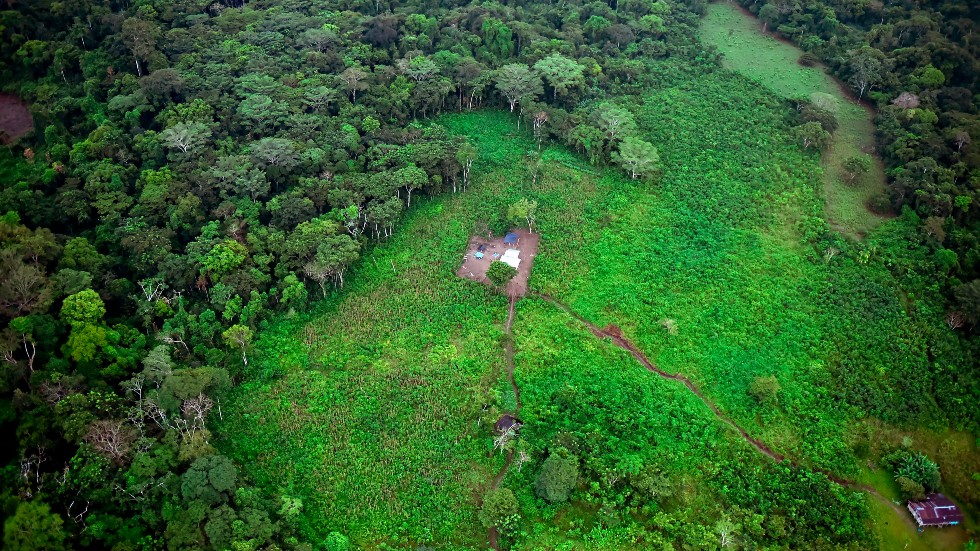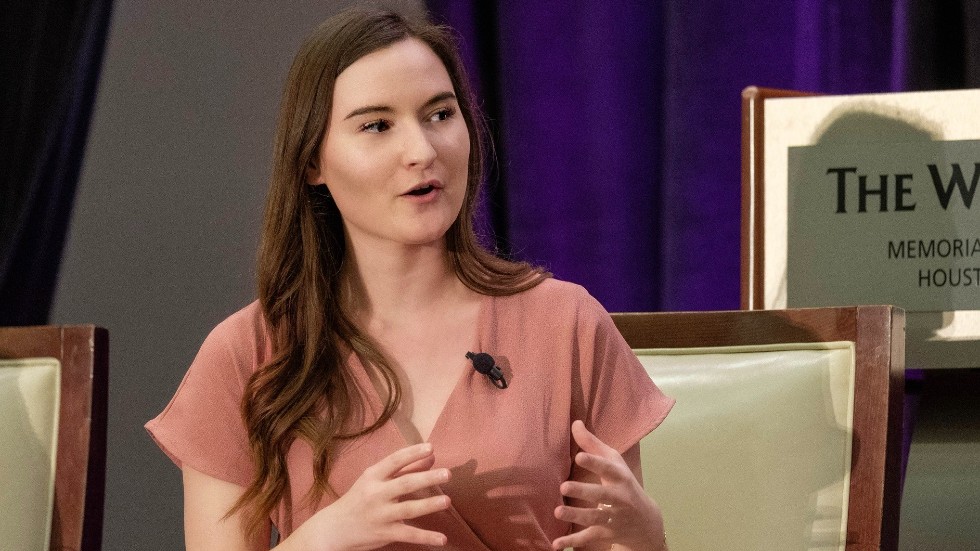Equilibrium/Sustainability — Presented by NextEra Energy — Cities a surprise refuge for wildlife

Today is Thursday! Welcome to Equilibrium, a newsletter that tracks the growing global battle over the future of sustainability. Subscribe here: digital-stage.thehill.com/newsletter-signup.
Owls, foxes, coyotes, otters: Even before the coronavirus pandemic cleared the streets of people, a new BioScience paper found, wild animals were slowly infiltrating human habitats.
Though cities have long been tarred as “biological deserts,” the researchers found, they don’t have to be. If laid out thoughtfully, permeated by greenways, and linked to the surrounding countryside, cities can be centers of connection for the animal world as they are for the human.
“I think one of the biggest research gaps is how do we balance the different needs of multiple species with limited space,” Myla Aronson of Rutgers University told Yale Environment 360.
In today’s newsletter, we’re looking at other unexpected connections and convergences. In Brazil, we look at how the three elements of ESG — environment, social and governance — come together in the question of paying the Indigenous people who defend Amazon reserves. And in the United States, young climate-conscious Republicans are pushing their elders to make the issue a priority.
Finally, it’s Thorough Thursday, and we have a series of short summaries of long-form sustainability articles that might interest you over the long weekend.
For Equilibrium, we are Saul Elbein and Sharon Udasin. Please send tips or comments to Saul at selbein@digital-stage.thehill.com or Sharon at sudasin@digital-stage.thehill.com. Follow us on Twitter: @saul_elbein and @sharonudasin.
Let’s get to it.
A MESSAGE FROM NEXTERA ENERGY
As the world’s largest producer of wind and solar energy, NextEra Energy is pioneering innovation on green hydrogen – the solution for deep decarbonization of hard-to-abate sectors. See how at NextEraEnergy.com.
ESG experts: Carbon markets could pay indigenous peoples who protect the Amazon

One of the most common questions about ESG is “What on earth do those three things — environment, social and governance — have to do with each other?”
To answer that question, we went to the Financial Times’s Global Carbon Forum, which looked at the role that global carbon markets can play in the Amazon rainforest, where a series of linked environmental, social and governance crises are pushing the forest toward a process of runaway dieback.
But that relationship goes both ways, investors and policymakers told the forum: Investors can also help pay Indigenous and peasant communities to protect the forest.
Green patches of ESG resilience: Look at a satellite map of the Amazon rainforest, and against the khaki brown of advancing soy and cattle pastures you will see “green patches” of national parks and Indigenous reserves, said Julia Marisa Sekula of the Igarapé Institute.
Those patches are a case study in how the three factors of ESG run together: they represent environments, but also the social groups — Indigenous and peasant communities — who hold back the frontier “at the risk of their own lives.”
And in a region where a half-million people live on less than $2 a day, “they are not adequately being compensated for that,” in an Amazonian economy that offers few options beyond straight resource extraction.
Payment for their service: The big idea behind carbon markets is to give companies an appreciating resource to invest in — the carbon stored in the Amazon’s plants and animals. That puts money in the hands of the local people who have the most control over what happens to the forest.
In the Brazilian state of Amazonas, 450,000 people live on less than $1.90 a day, said Valerie Hickey of the World Bank Group. “That’s catastrophic destitution, and we’re asking them on their shoulders to prop up the fight against deforestation. So, we have to pay them and get the private sector involved.”
Payments for the carbon stored in growing trees, Hickey said, could provide needed regular income, as well as “money for green business.” On a larger scale, carbon markets can be “part of a diversified income stream” that could help pump capital into other local businesses.
NO GOVERNMENT, NO MARKETS
Without G, you don’t get E- or S- either. The environmental solution for Brazil, Sekula of Igarapé explained, was in the long run a social one. “We need to move away from the perception of an agriculturally driven country based only on products of the forest — and to one which starts to include the services of the forest.”
Such a country, she said, would be a global leader in carbon markets and funding for biodiversity.
Such social solutions are hampered, however, by the actual state of Brazil’s forest governance. On June 24, for example, Ricardo Salles, Brazil’s environment minister, stepped down after reports linked him to illegal logging, as Juliana Ennes reported for Mongabay.
Carbon investment proponents hope to create a world where the government — and the private sector — protect the forest that, in its intact state, is still a cash cow. That’s only possible with effective governance, Hickey said.
“There’s no good in putting economic value on parts of the forest if the rest is seen as an asset that can be liquidated by anyone who wants to,” she added.
More government roadblocks to carbon markets: There are three other problems holding carbon markets back from mainstream success, Hickey said.
- No certification: Without a clear chain of custody certification and disclosure requirements, it is hard for businesses to have confidence in a carbon investment. How do they know carbon is being stored, or future buyers will trust their certificate? “There’s skepticism about how clear the rules of the game are,” Hickey said. And without private sector involvement, she explained, the capital needed to offset short-term benefits of clearing forests won’t be available.
- Low returns. In theory, carbon could be a huge market. The International Monetary Fund estimates the bounty for trapping a ton of carbon dioxide should be at least $75. Meanwhile, a 2016 Nature Climate Change study found it should be even higher — $116 a year — to make up for the unknown threat of climate tipping points. For 2020 emissions alone, that would mean a $1.5 trillion to $2.4 trillion market. But at present, the return for storing a ton of carbon caps out on the voluntary market at just $5.
- Can carbon markets actually reduce emissions? There’s a concern that in the voluntary offset market, “you just pay someone else to do good for the bad you’ve done,” without reducing overall emissions, Hickey said. She noted, however, that government-guided cap-and-trade schemes can drop total emissions.
Takeaway: While carbon markets aren’t perfect, Fabio Feldman, a former Brazilian federal legislator, said they do help motivate the government to take that interest and pay local people to protect the land, making them “important during the time when we transfer from current development models to sustainable models.”
A MESSAGE FROM NEXTERA ENERGY
We’re pioneering innovation on green hydrogen – the solution for deep decarbonization of hard-to-abate sectors. See how it can create jobs, accelerate economic growth and more at NextEraEnergy.com.
A shift in the GOP: ‘From outright denial to climate caucus’

Twenty-four-year-old Republican Danielle Butcher is watching with anticipation as GOP leaders move from “outright denial to now having a climate caucus” — a move she sees as the first step in integrating climate action into formal party policy.
Butcher, the executive vice president of the American Conservation Coalition, spoke to The Hill’s Equilibrium on Tuesday, just a week after Rep. John Curtis (R-Utah) launched the Conservative Climate Caucus and the same day that House Minority Leader Kevin McCarthy (R-Calif.), who serves on the House Select Committee on the Climate Crisis, unveiled a new task force on energy, climate and conservation.
“This is an excellent first step,” she continued. “The first thing you have to do in achieving climate action is start talking about these problems.”
The GOP’s complicated climate past: To Butcher, integrating climate action into Republican politics means “reclaiming our heritage” — or bringing back the GOP that created the National Park Service and the Environmental Protection Agency under former Presidents Theodore Roosevelt and Richard Nixon.
The party has changed a lot since then, with former President Trump — who cast doubt on climate change and diluted or axed multiple environmental regulations during his time in office — still the de facto leader of the party.
But with two-thirds of Americans indicating that the government should do more on climate change — a stance that Butcher observed “is especially true among young people” — she said that Republicans need to talk about these issues and involve the younger generation in the discussions.
A spring 2020 survey from the Pew Research Center showed that 65 percent of respondents felt the federal government is doing too little to reduce the effects of climate change. Meanwhile, an April 2021 Gallup poll showed that 74 percent of Republicans surveyed — and 99 percent of Democrats — believe that global warming will eventually affect humans.
But most don’t think it’s here yet: According to Gallup, only 29 percent of Republicans said they believe that these impacts have already begun, while 82 percent of Democrats believe that they have started. Just 11 percent of Republicans said they believe global warming will pose a serious threat in their own lifetime, while 67 percent of Democrats believe it is a serious threat to themselves.
Following the launch of the Conservative Climate Caucus — which in and of itself was a break from former Trump’s denial of climate change — Rep. Kathy Castor (D-Fla.), chair of the Select Committee on the Climate Crisis, told The Associated Press that she hopes Republicans are serious about addressing climate change.
“There is no more time for half measures,” Castor said. “If my Republicans colleagues really want to do something, they need to start voting in favor of real solutions.”
Climate policy has been a sticking point in negotiations over President Biden’s infrastructure plan this month, with multiple provisions left out of the deal made with Republicans.
Read more: Click here to read Equilibrium’s full story on the young Republican quest to integrate climate action into party policy.
ROUND-UP
Thorough Thursday

Deep issues, short takes.
Is Europe fudging its climate goals by burning trees?
- In 2009, the European Union published a Renewable Energy Directive, which officially recognized burning wood as a “carbon neutral” fuel alongside solar and wind power.
- Since then, the wood pellet industry has grown to account for more than 60 percent of EU renewables. But many scientists believe the industry does not deserve the “carbon neutral” appellation because of its role in clearing and burning forests that would otherwise keep absorbing carbon, Camilla Hodgson reported for the Financial Times.
- This has put Frans Timmermans, a senior head of the EU’s green deal, in a bind. “I hate the images of whole forests being cut down to be put in an incinerator,” he told Euractiv in May. But without wood energy, he has said, the EU can’t meet its goal of 30 percent renewables by 2030.
- According to the Financial Times, Paul Bledsoe, a former Clinton White House climate adviser, said that “the idea that national targets might determine the future for biomass, rather than its true environmental impact, is ‘absurd.'”
Exxon lobbyist admits that company fought “against some of the science”
- ExxonMobil lobbyist Keith McCoy revealed that the oil giant “aggressively [fought] against some of the science” behind climate change in undercover footage filmed by Unearthed, a group affiliated with Greenpeace, Zack Budryk and Rachel Frazin reported for The Hill.
- In the footage, first shared with the British TV program Channel 4 News, McCoy addressed litigation against Exxon that alleged it knew for decades about climate change fueled by carbon emissions, according to The Hill.
- “Did we aggressively fight against some of the science? Yes. Did we hide our science? Absolutely not. Did we join some of these shadow groups to work against some of the early efforts? Yes, that’s true,” McCoy said in the recording. “But there’s nothing … illegal about that.”
- Exxon CEO Darren Woods said Wednesday that the company was “deeply apologetic,” adding that McCoy’s comments “in no way represent the company’s position on a variety of issues, including climate policy and our firm commitment that carbon pricing is important to addressing climate change,” Kevin Crowley reported for Bloomberg Green.
- But the Exxon lobbyist video “has many problems,” wrote columnist Liam Denning, also in Bloomberg Green. In addition to criticizing various elements of the apology, Denning pointed out that Exxon will now be up against increasingly skeptical investors when it comes to the company’s environmental transparency measures.
Financial Times columnist has the recipe “to cope with the climate apocalypse”
- Columnist Simon Kuper provided what he described as “a not entirely gloom-and-doom plan of action” in his latest Financial Times piece. “How to live?” he asked, responding, “The younger you are, the more urgent the question.”
- The rule of thumb, according to Kuper, is that the safest regions of the world for those of us house shopping will be in relatively mild or cold climates.
- In keeping with the philosophy of Deep Adaptation, he cautioned against structuring our lives “around distant pay-offs,” as it would be unwise to “make any presumptions about your future.”
- One social — yet productive — way of “opting out” of climate destruction, Kuper suggested, is to look back to East Berlin in 1990, just after the fall of communism. With no official employment, many resident were living off the grid, and “people helped each other, expecting nothing of the future.”
- In this preview of a zero-growth, circular economy, he argued, they may have shown a vision of “our future.”
{mosads}Tomorrow it’s Follow-up Friday, when we return to the week’s stories and see how they’ve evolved since last we looked. Whether it’s heat or ESG, infrastructure or the life changing magic of resigning yourself to the end, what would you like to hear updates on?
Write to us as always: Sharon is at sudasin@digital-stage.thehill.com and Saul is at selbein@thehill.com.
As always, this is Equilibrium. Join us tomorrow afternoon for one more quick hit before your long weekend.
Copyright 2023 Nexstar Media Inc. All rights reserved. This material may not be published, broadcast, rewritten, or redistributed. Regular the hill posts











